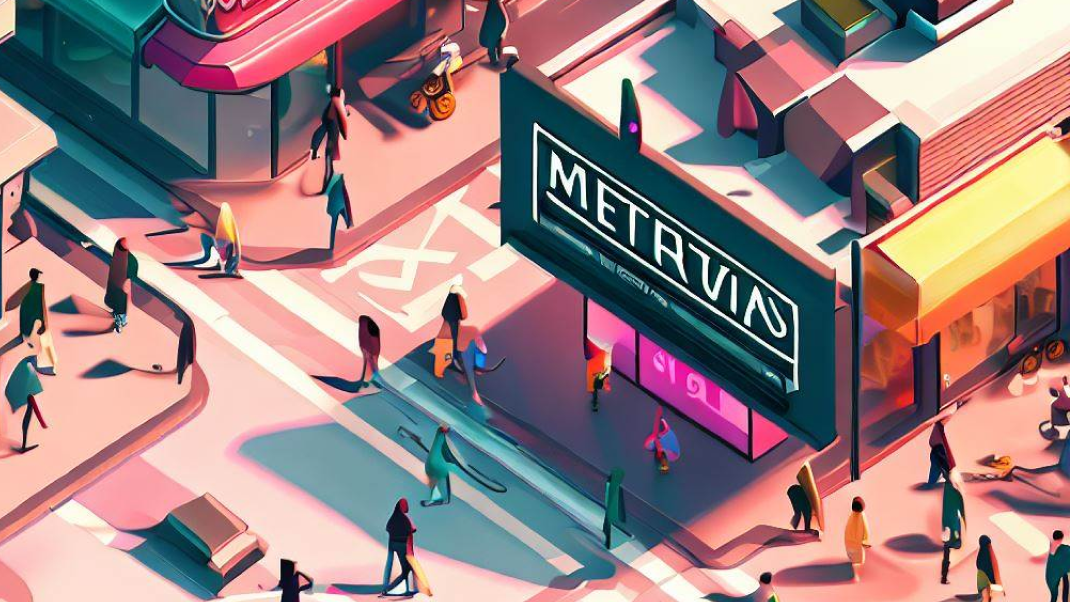
L'École de Design Nantes Atlantique and Laval Virtual are joining forces to offer a training programme in immersive design.
Crédits photos : École de Design Nantes Atlantique
Founded in 1988, the École de Design Nantes Atlantique trains students in a range of design professions (space design, product design, digital design, graphic design, etc.). Historically based in the city of Nantes, it is now opening a training centre in Laval in Mayenne, the international capital of virtual reality. The training programme will focus on immersive design, with the support of the Laval Virtual association. The École de Design Nantes Atlantique will naturally be present at the VR / AR exhibition on April 12-14, 2024, on stand A62. Interview with Christine Martin, Director of Communications.
What will your company show at Laval Virtual 2024?
This year, L’École de design Nantes Atlantique is presenting a project in partnership with Crédit Mutuel Arkéa that encourages students to question the role of banks in the metaverse by revisiting banking products through immersion. With the aim of exploring and projecting the uses of digital banking, Crédit Mutuel Arkéa has asked design students from the Digital Design Lab to help shape the future of their service by questioning the customer relationship and its social role in a 100% digital world.
This year, three students in the first year of the school’s Digital Design master’s programme and a 3rd year student will be presenting their “Arcade Odyssey” project as part of the Revolution #Students – Demo competition. Arcade Odyssey pays tribute to the famous arcades by bringing them back to life in a new light using new immersive technologies. The aim is to reinvent the interface of arcade games, particularly shooting games, by offering new interactions thanks to augmented reality.
What is your company’s current project?
From September 2024, the school will move to the Laval Virtual Center. To support the digital transition of design professions and the skills needs of businesses, L’École de design Nantes Atlantique is extending its influence to Laval with an original range of courses dedicated to the design of immersive worlds.
It will offer four new immersive design courses: three DN MADE (Diplôme National des Métiers d’Art et du Design) at Bachelor’s degree level (Space, Digital and Objects) and a Diplôme de Design, at Master’s degree level, in Design and Innovation Strategy for Immersive Worlds:
- the DN MADE Space, which aims to train students in Building Information Modelling (BIM) techniques, which are essential in the fields of interior architecture, architecture and the design of the built environment;
- the DN MADE Objects, dedicated to modelling and virtual mock-ups, to meet the skills needs of industry;
- the DN MADE Digital, based on methods and approaches in user experience design (UX Design) for immersive environments and virtual worlds;
- a Master’s degree in Design (Bac +5): “Design and Strategy for Innovation in Immersive Worlds”.
110 students are expected to join the Laval branch for the first time. They will benefit from the project-based teaching expertise developed by the Nantes-based institution, which is a member of the Conférence des Grandes Écoles (CGE) and has the EESPIG (Private Higher Education Institution of General Interest) label.
The academic quality of these courses is recognised by the French government. They also give priority to apprenticeships as a means of promoting professional integration. Of the 3 years of study on the DN MADE, half (18 months) takes place under apprenticeship contracts, and the two years of the Design and Innovation Strategy master’s programme on the Master’s degree design diploma are entirely apprenticeship-based.
What innovation do you think has most transformed the world of VR/AR?
It’s a complex question, especially as progress in materials has been relatively slow in recent years. We are making slow progress by miniaturising devices and improving the quality of components and additional functions (such as eye tracking), but without any real breakthrough innovation. The challenge now is content, and that’s where Artificial Intelligence is going to change the game. LLMs (Large Language Models) such as LUMA are capable of creating textured 3D models from text, or generating “3D gaussian splatting” environments from videos simply by using a telephone. Another possibility offered by LLM-type AIs will be communication with user peripherals and with contextual elements: being able to talk and interact in an augmented environment with an AI assistant opens the way to new uses, supporting design or creativity processes.
The baseline of our 26th edition is “Act For The Future”. In your opinion, how can immersive technologies impact the world of tomorrow?
In a thousand ways, but the major challenge lies in democratising immersive technologies to make them as accessible as smartphones: how tomorrow virtual reality/augmented reality goggles will perhaps be used as ubiquitously as a smartphone, in other words permanently and in almost every aspect of daily life. Apple’s Vision Pro virtual reality headset is already mapping out this future, offering (according to early user feedback) sufficient comfort to be worn for several hours while ‘living normally’.



